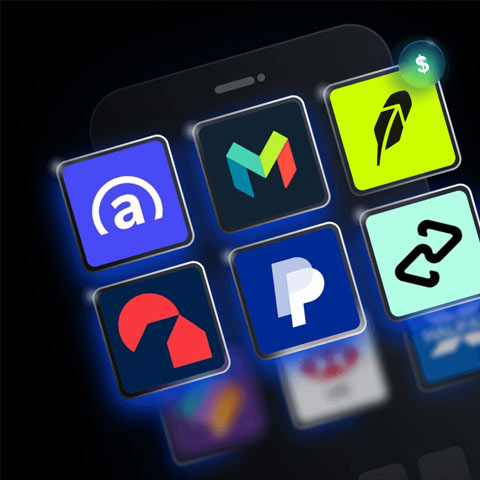The Ultimate Guide to Holiday Email 2016 Edition

Your customers get more emails at this time of year, so you’ll need to work hard to grab their attention. Adding a few animated snowflakes or a tired reference to Santa’s sleigh just won’t cut it, because every other brand includes them in their campaigns as well.
In this document, you’ll discover:
- Which kinds of campaign work well in this period
- How to maximise ROI on key calendar dates
- Essential things to include in holiday campaigns
- Ways of personalizing emails during the holidays
Get the downloadBelow is an excerpt of "The Ultimate Guide to Holiday Email 2016 Edition". To get your free download, and unlimited access to the whole of bizibl.com, simply log in or join free. |

|
Holiday emails: the basics
Three key pointers:
1. Quality and quantity
Less definitely isn’t more at this time of year. Do send more emails, but make them worthwhile. How? By thinking wisely about both content and timing.
2. Plan ahead
Don’t send festive emails on a whim. Use a calendar to map out your campaigns and promotions to ensure they’re well-timed and in keeping with your wider strategy.
3. Make life easier
Make it simple and convenient for your customers to get what they want. The more helpful you are, the more time you save them, the more likely they are to convert.
Campaigns that work
There are four main types of campaign that work well this time of the year:
- Limited-time offers
- Based on personal interests
- Benefit-based
- Based on discounts and bundles
1. Limited offers
A clear call-to-action with a strong sense of urgency, such as a discount that’s only valid on Black Friday or ‘last chance for guaranteed delivery by Christmas’.
Based on personal interests
Suggest gifts for specific groups of people, like keen cooks, gardeners, movie buffs or chocolate-lovers.
Tip: use past purchases
Past purchases are a great starting point for email targeting – suggest similar products that might be of interest this year.
3. Benefit-based
Sometimes it’s not about the price. This is the perfect time of year to build relationships by showing the human side of your brand and giving your customers something for free.
Try offering:
- Virtual content, such as seasonal tips, recipes or competitions – use this to encourage social media sharing and interaction. OfficeDepot realized the value of this way back in 2006, when they created ‘Elf Yourself’. This has since evolved and continues to be used every year.
- Real-world benefits, like free wrapping, express shipping or click and collect services.
4. Discount-based
Discounts can be a great way to persuade customers to complete a purchase or buy something extra.
Want more like this?
Want more like this?
Insight delivered to your inbox
Keep up to date with our free email. Hand picked whitepapers and posts from our blog, as well as exclusive videos and webinar invitations keep our Users one step ahead.
By clicking 'SIGN UP', you agree to our Terms of Use and Privacy Policy


By clicking 'SIGN UP', you agree to our Terms of Use and Privacy Policy
Campaigns that Work: Jack Wills
What makes campaigns successful? For this one from Jack Wills, the subject line really captured attention ‘Fa la la la la la la loungewear’ and it perfectly complemented the email content too.
Tip: suggest add-ons
Target more deeply by segmenting your offers with discounts for add-on purchases, like 25% off coffee capsules when you buy a Nespresso machine or special offers on DVDs when you buy a DVD player.
Tip: create product bundles
Make customers’ lives even easier by grouping products into bundles. For example, tempt someone buying a French press with a special coffee selection or mug set.
Campaigns that Work: Harvard Sweet
Tip: promote by price
Another way to boost sales is to group your products by price. With office parties starting soon, target people shopping for Secret Santa gifts with products under £5. Once they’ve clicked through to your website, you can tempt them with further products.
Campaigns that Work: Starbucks
Know your audience
The information you have about your customers should inform what emails you send and when. This is already available to you in your data, so why not take advantage of it?
What data to look for in your reports:
- What day of the week do people buy
- What time of day do they buy?
- Are there buying patterns?
- Did they buy at this time last year?
You can then use this information to set up specific automation programs to send targeted campaigns to the relevant subscribers.
Resell to subscribers
Lots of people buy magazine subscriptions (or other general subscriptions like tea, coffee, beauty products, etc.) for their loved ones, so why not use that data in your campaigns?
- Email the buyer asking if they’d like to gift the same product again
- Establish a time limit and wait to see if they convert
- No purchase? Email the recipient and ask if they want to renew instead
Get your timing right
Why you should start early
Start sending emails that link into your holiday campaigns. Open the conversation now so you can prime your customers for key buying opportunities.
But exercise caution…
Don’t annoy people by bombarding them with Christmas-themed emails in October. Make sure every email offers something of value. For example, encourage people to build a wish list or Pinterest board and share it with friends and family.
Important calendar dates to know about in 2016
Thanksgiving: 24 November
Mainly celebrated in the US, Thanksgiving is the third-busiest promotional day after Black Friday and Cyber Monday. Online Thanksgiving jumped 25% to $1.73bn in 2015.
Tip: mobile matters
MCommerce is growing at a 59% yearon-year, which equated to $5bn in 2015. During the holiday season smartphones alone were worth 40% of retail traffic.
Black Friday: 25 November
This tends to be when people get their November pay packets and it’s one of the most significant dates for online shopping. Sales in 2015 increased 35.8% on last year, with spending reaching £1.1bn($1.64bn) in the UK alone.
Record-breaker: the UK
Black Friday gave the UK it’s biggest day for online retail ever recorded according to Business Reporter.
Cyber Monday: 28 November
America’s National Retail Federation coined the term ‘Cyber Monday’ to encourage people to shop online.
In 2015 sales on Cyber Monday reached $3.1bn. But due to marketers creating a five day shopping period, from Thanksgiving all the way through to Cyber Monday, its individual performance seems to be levelling out.
Record-breaker: Amazon
Amazon was the stand out winner of 2015, with a sales growth of 24.1% during the Thanksgiving to Cyber Monday period.
Manic Monday: 5 December
Another peak day for online shopping as people try to blitz their Christmas shopping while items are still in stock.
Christmas Day: 25 December
The shops may be shut, but Christmas is an important day in the email marketing calendar. More than half of consumers will go online to at least browse.
What about Christmas Eve?
Christmas Eve was actually the quietest online shopping day in 2014.
Want more like this?
Want more like this?
Insight delivered to your inbox
Keep up to date with our free email. Hand picked whitepapers and posts from our blog, as well as exclusive videos and webinar invitations keep our Users one step ahead.
By clicking 'SIGN UP', you agree to our Terms of Use and Privacy Policy


By clicking 'SIGN UP', you agree to our Terms of Use and Privacy Policy
Boxing Day: 26 December
Shoppers were still going strong on Boxing Day in 2014, with 47% more e-commerce transactions than in 2013.
Tip: retarget for repeat business
Retarget customers who spent money on other key dates like Black Friday with offers timed around Boxing Day
So when should you start your communications?
You should already have a strategy in place...but when do you execute it? Here are a couple of factors you should take into consideration.
1. What is the nature of your business?
PetsPyjamas specialize in holidays, and so have already begun their Christmas marketing - with a campaign as early as August. But as travel plans take time to organize it’s wise to start early, so any plans don’t become part of the holiday season stress.
2. Are there any other key dates before the holiday period?
Don’t make your message complicated. If there are key sales opportunities before the holiday season, take advantage of them before moving on. You don’t want to distract customers from present events. So if your sales are high for Halloween, don’t concentrate on Black Friday or Christmas until it’s over!
Tip: play the long game
Just because key dates occur before the holiday season doesn’t mean you can’t open up the conversation. Don’t be afraid of sending a Christmas themed email in October to prepare your contacts. But be subtle! Why not take a look at your colour choices or how you can elude to it in your copy, without making it obvious it’s a Christmas email?
Delivery cut-off dates
Use last posting dates to inspire a sense of urgency. Remind customers to shop now if they want their gifts in time for Christmas.
Campaigns that work: Topshop
They avoided customer frustration by being very clear about shipping expectations – and encouraged purchases by creating a sense of urgency.
Tip: last-minute promotions
Once delivery cut-off dates have passed, why not appeal to last-minute shoppers by letting them know where the nearest store is? Use your data to show stores nearby, with late night shopping, so you can still complete the sale in-store. Also promote gift cards and subscriptions as an alternative.
Tip: create cut-off campaigns
Delivery cut-off dates are a great way to build a sense of urgency around holiday shopping. Use your last date for delivery by Christmas Eve to plan an email campaign and tell customers when they have to order for different levels of shipping.
Create compelling content
Holiday content: six dos and don’ts…
Do create a sense of urgency
Emphasize the need for customers to act now, whether it’s their last chance for delivery by Christmas or the product they left in their basket is about to sell out.
Don’t just do the hard sell
You wouldn’t call your customers and just shout: “Buy things!” down the telephone, so don’t do the same by email. Brand engagement is as important as ever, so offer them ideas for gifts, table settings for the family dinner, DIY for Christmas tree, crafts with kids, etc. Just make sure it suits your brand personality and what they expect to receive from you.
Do keep it simple
People’s attention spans are short and so is the time they have, so keep things simple. If they spend 15-20 seconds on average reading an email, this time is likely to go down as the volume of email in their inbox increases. So make it count! Get to the point quickly and make your call-to-action obvious and clear.
Don’t forget the details
Include click-through links to relevant, active pages on your website and provide accurate, up-to-date information about delivery times and stock levels. Again, you could use real-time content to update details like stock levels, which creates a sense of urgency. Nothing convinces someone to buy like the thought that the perfect present for their loved one is low in stock.
Tip: offer free wrapping
People generally hate wrapping presents, so why not try offering a free wrapping service? Run a test to see if this works with your customer base; especially worth considering if you have a high end brand positioning.
Want more like this?
Want more like this?
Insight delivered to your inbox
Keep up to date with our free email. Hand picked whitepapers and posts from our blog, as well as exclusive videos and webinar invitations keep our Users one step ahead.
By clicking 'SIGN UP', you agree to our Terms of Use and Privacy Policy


By clicking 'SIGN UP', you agree to our Terms of Use and Privacy Policy
Do use clear calls-to-action
Tell customers exactly what they should do as a result of getting your email. Make use of both copy and call-to-action buttons – and be inventive with your copy.
Don’t overdo the festive feel
Holiday emails should feel relevant and exciting. They shouldn’t make people cringe, or blast their offices with auto-play music.
Campaigns that work: Fortnum & Mason
This email from Fortnum & Mason used festive language and imagery to encourage customers to start thinking about their entertaining options.
Campaigns that work: Monsoon
If you use an overload of reindeer and snowflakes then subscribers will miss the message. This email from Monsoon took a much more subtle approach while still creating a festive feel, using ‘ ‘Tis the season’ and gold tones. It works because it’s tasteful rather than tacky.
Revamp your landing page
Your website should keep things consistent for customers who click through from seasonal emails. Keep it tasteful and remember that not everyone celebrates Christmas.
Make it personal...
Target your customers effectively by using dynamic content to send tailored, relevant emails. Use their names and promote products and deals based on their interests and buying habits. Webscraping can be a powerful way to pull in information.
Campaigns that work: Celtic & Co.
Celtic & Co. used Black Friday weekend to promote the atmosphere around Christmas in a subtle way - combining the two big events into one. It worked for them because they saw £27K worth of revenue from this campaign.
…and make it responsive
62% of emails are opened on mobile devices on an average day, so your emails need to be mobile-friendly and responsive. In fact, Future Publishing recently updated their template to a responsive one and saw a 500% increase in click-to-open rate.
Tip: try countdown ‘stocks’
Countdown clocks are an effective and dynamic way to create a sense of urgency and inspire impulse shoppers to make a purchase. But why not use the real-time technology to count down to the level of stocks left from bestselling products?
Campaigns that work: The Diamond Store
The Diamond Store knew that competition in the inbox on Black Friday would be intense. They decided to use a live countdown clock to create urgency and excitement around their 24 hour Black Friday sale.
This campaign brought them a 400% increase in conversions compared to other big sale campaigns.
Tip: encourage interaction
Surprise your subscribers with creative content. Why not try running an advent campaign with click-through links to unlock daily discounts or competitions? This will keep them coming back and engaging with your content.
Triggered emails: turn browsers into buyers
With customers browsing multiple emails to compare products and prices, it’s important to use triggered emails to retarget basket and browse abandonment.
Our research has shown that 67% of customers abandon baskets. Send an automated email and about 20% return to purchase. Use a creative subject line, like: ‘A present fell off Santa’s sleigh’.
Run mop-up campaigns
Try targeting people who abandon browsers and baskets with follow-up campaigns on the last pay day and delivery day before Christmas.
…and remember the big picture
Your holiday emails should link into your overall strategy. Invite first-time buyers to subscribe to your newsletter and send seasonal discount offers in ‘welcome’ emails.We hope you’ve found this eGuide useful and informative. You should now understand how to approach your holiday email strategy, which dates to build campaigns around and what to consider when crafting your emails.
Embrace the holiday spirit
It’s not all about selling
For long term relationship-building with your customers, you have to understand that sometimes it’s not about the deals and offers but about a human connection.
On the day of their festivities, why not just acknowledge the event with a ‘Merry Christmas’ or ‘Happy Hanukkah’ email? Poppin’ embraced the holiday spirit in the example below.
Be mindful of your customers
While it might be tempting to use the word ‘Christmas’ in every single subject line and email, be conscious of the fact that not all your customers will celebrate Christmas. Try to use ‘holidays’ instead.
And it’s not just the language you should be thinking about! Particularly in B2B, let your clients, suppliers and prospects know if and when your offices are closed as they won’t be able to reach you. Managing expectations will make it easier to pick things back up in January .
Want more like this?
Want more like this?
Insight delivered to your inbox
Keep up to date with our free email. Hand picked whitepapers and posts from our blog, as well as exclusive videos and webinar invitations keep our Users one step ahead.
By clicking 'SIGN UP', you agree to our Terms of Use and Privacy Policy


By clicking 'SIGN UP', you agree to our Terms of Use and Privacy Policy









